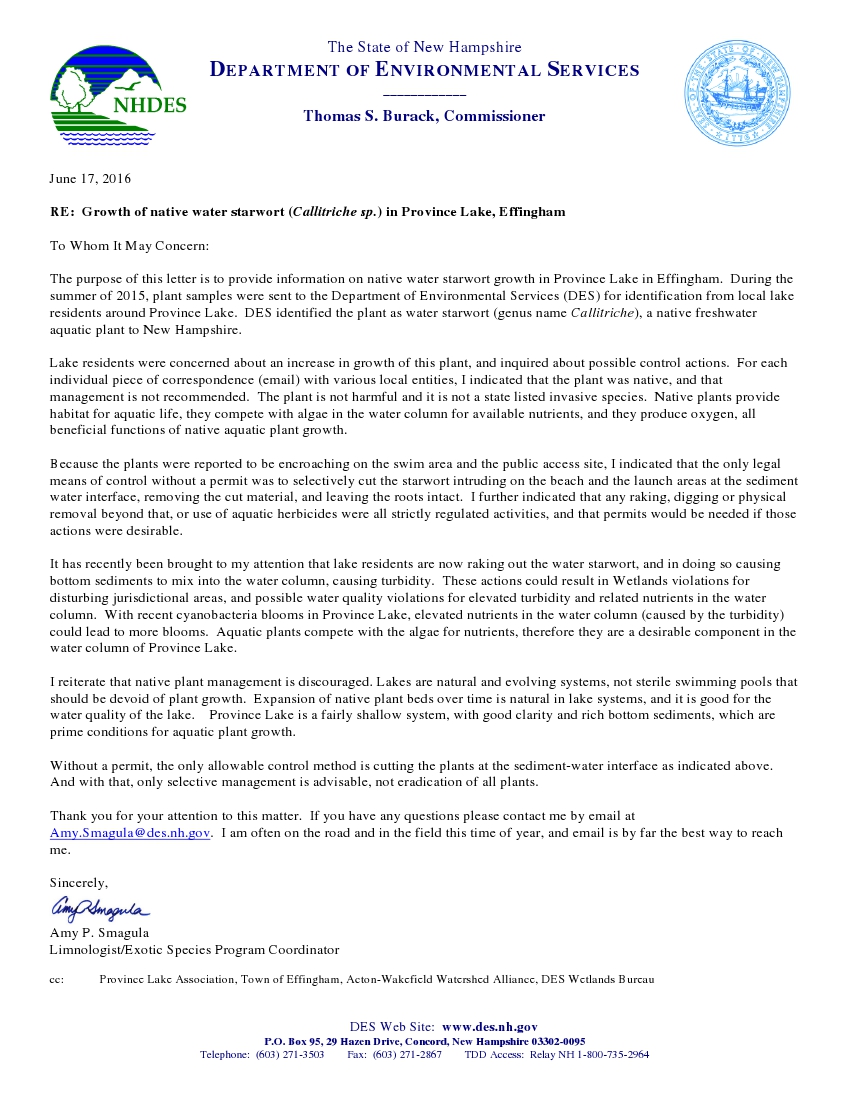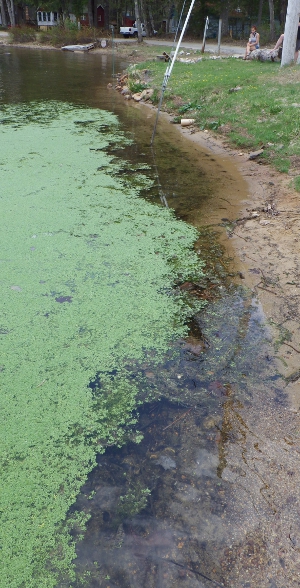Aquatic Weed Monitoring of Province Lake
Effingham & Wakefield, New Hampshire, and Parsonsfield, Maine
New Aquatic Plant Not Native to Province Lake -
Independent Report - Published Online on May 22, 2015
Updated July 11, 2015, July 21, 2016, and June 29, 2017, as noted
June 29, 2017 UpdateAmy Smagula of NH DES has provided this letter (original pdf version) that describes the procedure approved by NH DES for controlling Callitriche species. I know Amy from several NEC-NALMS conferences and from a weeds training session that she did for about 10 of us after the PLA annual meeting one year. She is intelligent, dedicated, hard-working, and stretched very thin, covering the entire state. The letter identifies the plant only to the genus level, not to species. Since the plant we have seems to be rather fragile, the specimens sent to DES for identification by local residents would have degraded somewhat before being in DES's hands. They would also represent a snapshot of the time the specimens were collected. Considering there are a number of similar-looking species in the Callitriche genus, it is reasonable that DES might not have been able to narrow their identification down to the individual species with the specimens they received. However, the Callitriche genus contains both native and non-native species. Since DES did not identify down to the species level, they cannot accurately claim that our plant is a native. However, we have three prominent professional botanists who have observed the plant on site and identified it to the species level, as the non-native Callitriche stagnalis. Photos on this web site were taken of the plant after it was allowed to grow in a container off-site and enter its reproductive phase. The photos support the conclusions of these experts. That said, it is useful that the DES has described the actual procedure approved for management of the plant. Cutting it off at the sediment/water interface, then carefully capturing and removing all cuttings from the lake is a prudent procedure. Since Callitriche stagnalis seems to be fairly delicate, I expect that this would control the plant quite well. I would add that all cuttings should be placed in black plastic bags, then left out in the hot sun for several weeks, before being disposed of in a landfill, to be certain the plants and any seeds are killed and cannot spread the plant to other locations. NH DES has also provided permission by email to the appropriate people to proceed with the cutting. |
Introduction
You may have noticed the bright green, dense weed bed in Province Lake about 55 feet west of the Towle Farm boat ramp on Bonnyman Road this spring. It is more obvious at this time of year because it is way ahead of all the plants native to the lake in its development.
7/21/2016 update: The size of the weed bed was measured again in May 2016, in accordance with the recommendation by experts to monitor the extent from year to year. It has definitely increased its extent, reaching all the way to the edge of the boat ramp. The measurements will be added to this report later.
This report describes the independent investigation to determine the probable identity of the new plant. It provides backup evidence to support that identification, including microscopic photographs. A brief description of invasions follows to explain the need for prompt action. While New Hampshire Dept. of Environmental Services (NH DES) does not list this plant as invasive, I present reasons why it would be safer to treat it as an invasive. The report presents possible outcomes if this plant is not eradicated, and describes safeguards commonly used when cutting invasive aquatic weeds. Finally, for monitoring purposes, I present approximate measured dimensions of the weed bed and recommend that all weed watchers patrol their areas of the lake as soon as possible to check for any spread.
No organizations or agencies were involved in the investigation or this report.
NOTE: All photos shown on this page are reduced size thumbnails. Click on them to see the full-size photo, then click the back arrow on your browser or [ALT]+[←] on your keyboard to return to this report page.
 |
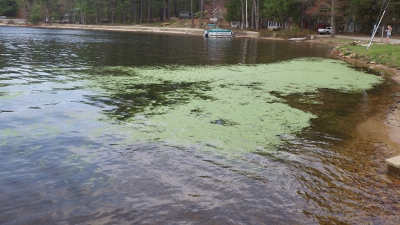 |
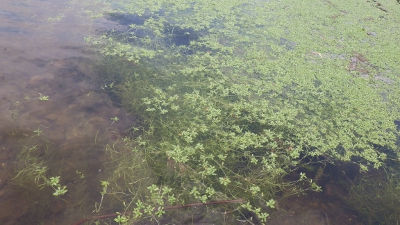 |
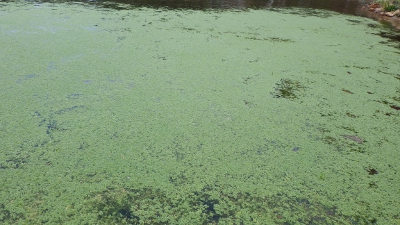 |
| General location, with boat ramp and culvert in foreground | Weed bed, with boat ramp at upper right | Looking in at GPS coordinates N43° 40' 46.11", W70° 59' 25.54" | Dense mat |
Identification Issues
In early May 2015, my wife and I brought this new and growing weed bed to the attention of two nationally prominent, but modest, professional botanists who had recently returned to their cottage on the lake. The botanists sampled the plants and identified them as Callitriche stagnalis (pond water-starwort). Their identification was aided by a Michigan guide (1) and by IPANE (2), in both of which this plant is identified as being invasive. [Click here for pronunciation of Callitriche.] The information that we and the botanists gathered was emailed to Dr. C. Barre Hellquist , possibly the foremost aquatic botanist in New England. He has a cottage on Lake Ossippee, so he is familiar with the local flora. Dr. Hellquist confirmed the identification and forwarded his own picture of the plant growing in the Pine River. (The large leaves in his photo are of Potamogeton natans, a plentiful native on Province Lake.) Dr. Hellquist wrote:
"Yes, the plant is Callitriche stagnalis. It has been in the Pine River for over 50 years and has not spread. Occasionally a site appears in Ossipee Lake, but tends to be short lived. Keep your eyes on it, but it should not become a problem. Attached is a Pine River photo of it."
7/11/2015 update: Part of the sample was delivered to yet another highly experienced professional botanist in Rhode Island, who stated in an email on June 11: "In looking with a hand lens, I agree with the others on the NH collection, although the flowers and bracts all seem gone. But the leaf shapes and notch at the tip of the linear leaves, and the seed structure all seem to match the keys I have (Crow & Hellquist)."
We interviewed several people about the first appearance of the plant. All reported that it appeared after the culvert work was performed beside the boat ramp in 2014, so it was possibly introduced via the construction equipment used in the project. It had never been reported in the lake before, making it non-native to Province Lake.
One person was told that when a wetlands permit is obtained from the State to do culvert work, a weed permit is normally obtained at the same time, in case there is an introduction of new weeds. In this case, the weed permit had not been obtained, so the immediate action that would normally have been taken to treat a new invasion while it was small and manageable was not taken. Therefore, the new weeds were allowed to go to seed and the invasion is now in its second growing season. This perennial plant grows from both seeds (sexually) and from dispersal of fragments that can grow into new plants (asexually).
The botanical manual Flora Novae Angliae (3) lists Callitriche stagnalis as non-native to New England. It lists two closely related species, C. heterophylla (greater water-starwort) and C. palustris (vernal water-starwort) as being native to New England. Both of these are also listed in the Maine Guide (4), page 52, as native plants. The thinner New Hampshire guide (5) makes no mention of the genus Callitriche because NH DES experts have not classified C. stagnalis as invasive. Both states' guides and Flora Novae Angliae thank Barre Hellquist for his help in their preparation.
The dichotomous key on page 708 of Flora Novae Angliae indicates that the only way to distinguish C. stagnalis from the two natives without the presence of fruit is by the width of the floating leaves and the number of veins in those leaves. C. stagnalis leaves are 3-8 millimeters (mm) wide, natives "up to 5 mm wide". C. stagnalis leaves have "5-7 veins by branching of the lateral veins", natives have "3 (-5) veins". My photos show 7 veins by lateral branching and a floating leaf that is about 6.5 mm wide. Most leaves measured were 5 mm or less wide, making leaf width less than definitive, since the leaves could still be growing, but the vein count is more convincing. These photos support the expert identifications.
In summary, this plant is most likely Callitriche stagnalis (pond water-starwort), classified as invasive by some states, including Maine, but not by NH DES at this time.
Discussion of Invasions
In my various trainings to become a weed monitor, as well as a Certified Invasive Manager (I.M.) in Rhode Island, and other conferences I have attended, I have frequently encountered this graph that describes the progress of species invasions:
Up until last year, Province Lake was in the first stage of the above graph for all species. When this plant appeared, we entered the second stage for this plant only. Chapter 3 of Plant Invasions and Their Management (6), from which the above graph was copied, has this to say about stage 2:
"Early detection and eradication. Since exotic invasive plants usually have a long lag period following introduction but before exponential growth during colonization, they can usually be eradicated at that time if recognized. Thus, early detection and rapid response (EDRR) usually requires an informed and vigilant public and the ability to remove the new population once detected. Land managers who can act quickly to eradicate an exotic invasive plant usually avoid the long-term costs of containing the plant and the damage it causes to the land."
Conference leaders have said that stage 2 is often characterized by people with limited knowledge saying "Don't panic - let's wait and see what happens". This is especially the case when the species is not one that people have been specifically watching for, but something no one locally has seen before. Such unusual species are know in the invasives community as "early detection species", which are always of concern because no one is expecting them to show up, so they can sneak in.
Once stage 3 is reached, it says:
"Containment/control. During rapid population growth or colonization, managers should abandon efforts to eradicate the plant species and focus on control or containment. If no action is taken to contain the species from spreading, it can eventually become naturalized, occupying the land close to its carrying capacity and replacing local species."
About Invasive Species Listings
New Hampshire Dept. of Environmental Services (NH DES) has not listed Callitriche stagnalis as invasive. This is understandable, since it has rarely been seen in the state and has not caused any major problems here, as attested to by Dr. Hellquist, above.
- Maine Department of Agriculture, Conservation and Forestry lists C. stagnalis among "Plant species potentially or probably invasive in Maine".
- According to Go Botany, C. stagnalis is present in Massachusetts, Connecticut, and Maine, and is listed as invasive and prohibited for sale in Connecticut.
- According to the Invasive Plant Atlas of New England, C. stagnalis (to which they give a common name of "European waterstarwort") is one of 23 aquatic invasive plants in New England.
- C. stagnalis is listed in the Invasive Plant Atlas of the United States.
- C. stagnalis occupies page 22 of the Michigan guide.
- The New Jersey Invasive Species Strike Team includes C. stagnalis on its 2015 DO NOT PLANT LIST.
My point is that just because one state does not list a plant as invasive does not mean that the plant cannot be invasive. It usually means that it has not become a problem yet in that state.
The basic characteristics of an invasive species are: 1. asexual/sexual reproduction; 2. fast growth; 3. rapid reproduction; 4. high dispersal rate; 5. phenotypic plasticity (ability to alter growth form); and 6. tolerance of a wide range of existing conditions.
We have probably already seen characteristics 1 through 4, considering how fast the size of the weed bed has grown and how dense the plants are within the bed. Invasive plants also have a tendency to green up and grow early in the growing season, getting a jump on the native species of plants, a characteristic we have witnessed this spring.
7/11/2015 update: During a recent visit to the weed bed, we spoke with a highly reliable resident observer, who told us that the weed bed had been visibly growing under the lake ice before ice-out. Growing under the ice is another invasive aquatic plant characteristic. According to the Maine Guide (4), this characteristic is shared with Eurasian water-milfoil, variable water-milfoil, and at least one hybrid water-milfoil, as well as 2 native Elodea species and 2 native hornworts, including coontail, which is common in Province Lake.
What To Do
It seems likely that the plant is the invasive Callitriche stagnalis. Even if it is not, it seems to be generally agreed that this plant species was only recently introduced to Province Lake, so is non-native to the lake.
The plant has exhibited invasive characteristics, so is a threat to plants that are native to Province Lake, as well as being a hindrance to enjoyment of the waterfront by those who use Province Lake. The thickness of the mat indicates that swimming and motor-boating will not be possible in the specific areas where it takes hold.
If the plant is left alone, there are several possible outcomes. As Dr. Barre Hellquist has observed nearby in New Hampshire, the plant may not spread or its residence may be short-lived, and it may not become a problem. At the opposite end of the spectrum, the plant may find Province Lake's warm shallow waters to be ideal and its spread could become exponential. Any intermediate situation is possible. One could do nothing and hope for the best, but just hoping for the best is rarely a sound strategy.
The best time for early detection and eradication of the plant was last year. Possibly this year could be the last chance for eradication of the plant. Or it might go away on its own or not expand its range. No one can really know.
Meanwhile, boats entering or cruising the lake have the possibility of moving seeds or plant fragments to other parts of the lake. Boats leaving the lake have the possibility of moving seeds or plant fragments to other water bodies.
The following photos taken on May 20 show reproductive structures on my sampled plants, so they are likely to be going to seed soon. Please note that these structures are really tiny, so require close examination with magnification to be seen.
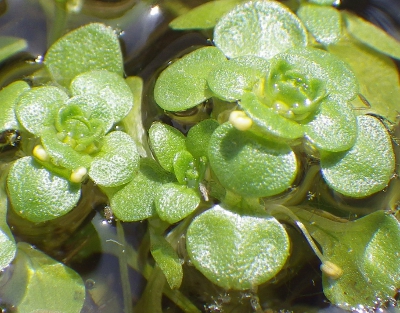 |
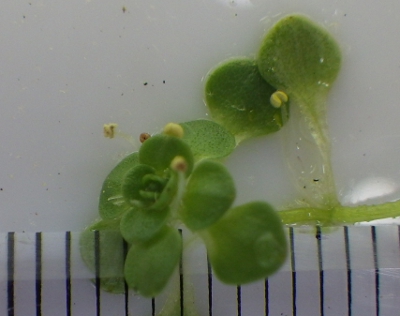 |
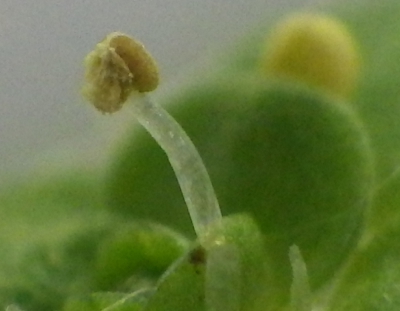 |
 |
| Flowering | Flowering with scale | Reproductive structure | Reproductive structure with scale |
|
This file is the jpg version of the letter giving the procedure approved by NH DES for controlling Callitriche species, as described in detail in the June 29, 2017, update at the top of this web page. |
At a minimum, Dr. Hellquist recommended keeping an eye on the weed bed, so we took our own initial measurements of the weed bed size on May 10, 2015. The east end of the bed is in line with the telephone pole that lies ~57 feet from the center of the boat ramp, and ~39 feet from the center of the culvert that may have been the source of the weeds. There is a guy wire post for the telephone pole in the lake ~20 feet down the shore from the pole. At this point, the bed is ~12 feet wide, with the outer edge being ~14 feet from the post. Going to a point 12 feet west along the shore from the post, the bed is ~23 feet wide. Going to another point ~27 feet west along the shore from the post, the bed is ~36 feet wide. The maximum bed width measured was ~41 feet. The total bed length measured was ~67 feet. Of course, the bed is irregular in shape, as seen in the photos on this page, so all these measurements are approximate. Scattered individuals or clumps of plants beyond the main bed were ignored for measurement purposes. I wore my waders to take these measurements and tried to walk directly through the bed, but the weeds were so thick, I could not just push through them; I had to lift my legs high to take steps through the bed.
For those of us who are official weed watchers, it will be important to watch for the appearance of this plant anywhere else in the lake and report it to the weed watch coordinator. Since this plant is active before our native plants, it will be important and easy to look for it immediately.
Thanks for your interest,
Norm Dudziak, P.E., I.M.
Footnotes
- Campbell, Suzan; Higman, Phyllis; Slaughter,Brad; and Schools, Ed, A Field Guide to Invasive Plants of Aquatic and Wetland Habitats for Michigan, Michigan State University Extension, 2010.
- Invasive Plant Atlas of New England (IPANE)
- Haines, Arthur, New England Wild Flower Society's Flora Novae Angliae: A Manual for the Identification of Native and Naturalized Higher Vascular Plants of New England, Yale University Press, New Haven, CT, 2011.
- Maine Volunteer Lake Monitoring Program. Maine Center for Invasive Aquatic Plants, Maine Field Guide to Invasive Aquatic Plants and their Common Native Look Alikes, Maine Volunteer Lake Monitoring Program, Auburn, Maine, 2007.
- Smagula, Amy, and Connor, Jody, Aquatic Plans & Algae of New Hampshire's Lakes and Ponds, New Hampshire Dept. of Environmental Services, Concord, NH, 2007.
- Radosevich, Steve, "Plant Invasions and Their Management" Chapter 3 in CIPM (ed.), Invasive Plant Management: CIPM Online Textbook. Bozeman, MT: Center for Invasive Plant Management. 2007.
Legal Disclaimer: I am a degreed environmental engineer, licensed in Maine and other states, but my communications on this topic are educational in nature. No legal or regulatory advice is intended, nor should any be inferred. Due to my professional engineering licenses, I am required to say that this communication does not constitute engineering work, even when using my engineering knowledge. I do not speak for anyone but myself, in the form of my company, E and I Services, LLC.
Terms of Use: Anyone is allowed, even encouraged, to link to this page. However,
no one is authorized by the author
or by E and I Services, LLC to copy the content and post it on another web site.
This web site is owned by E and I Services, LLC and has no affiliation with any other organization.
Copyright © 2015-2017 by E and I Services, LLC. All rights reserved.
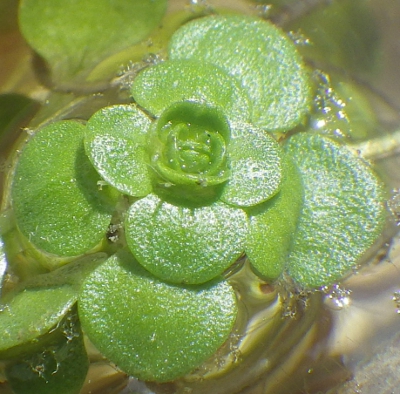
barre-hellquist_400px.jpg)

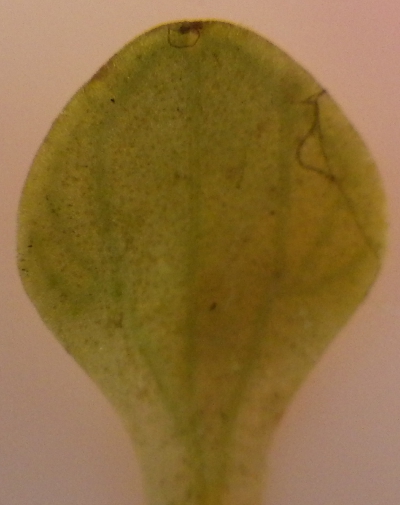
radosevich-2007.jpg)
